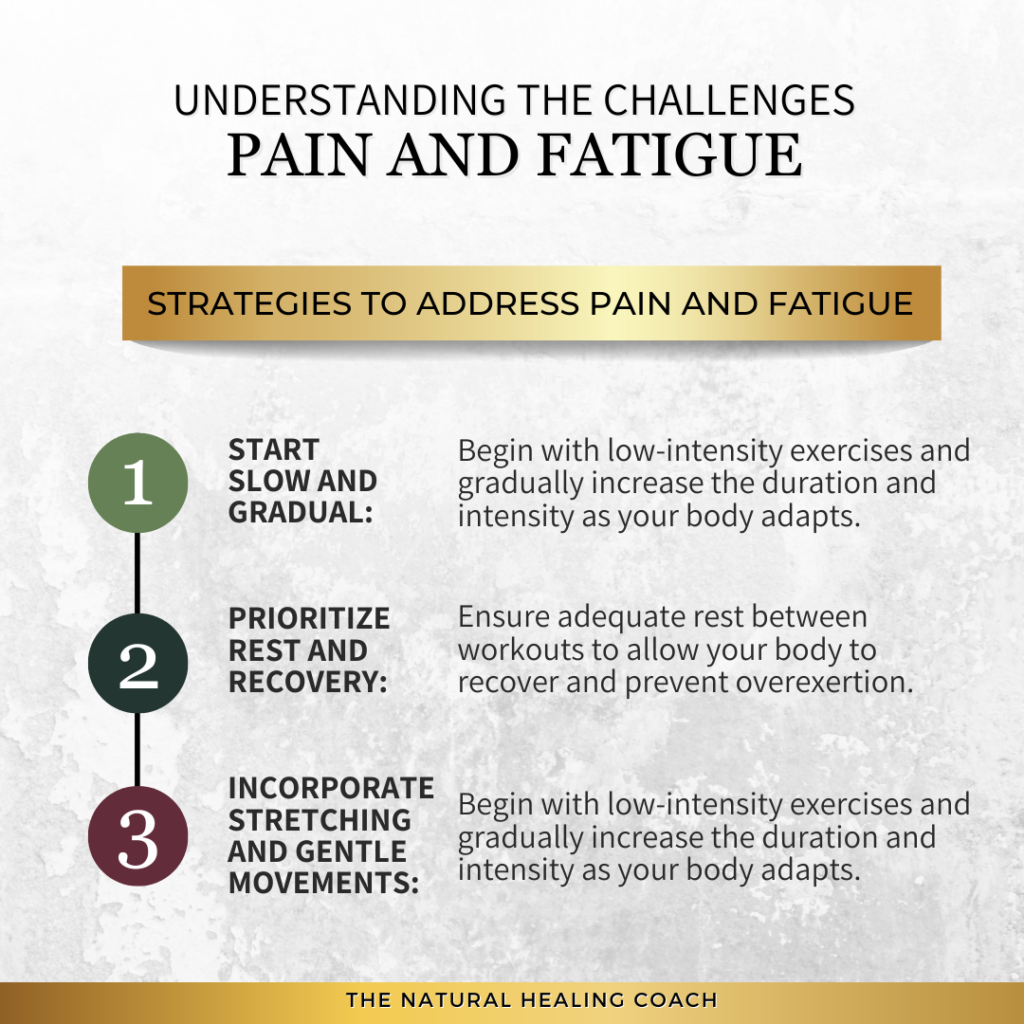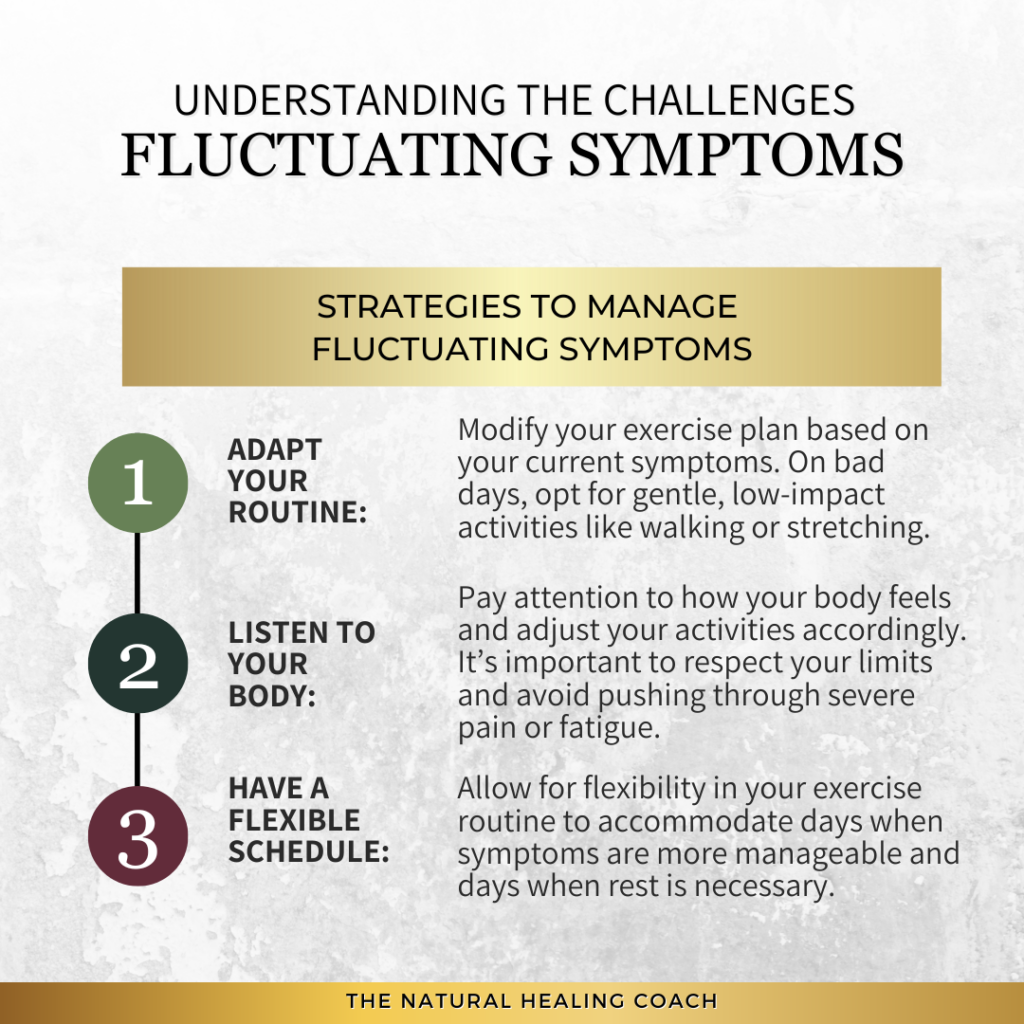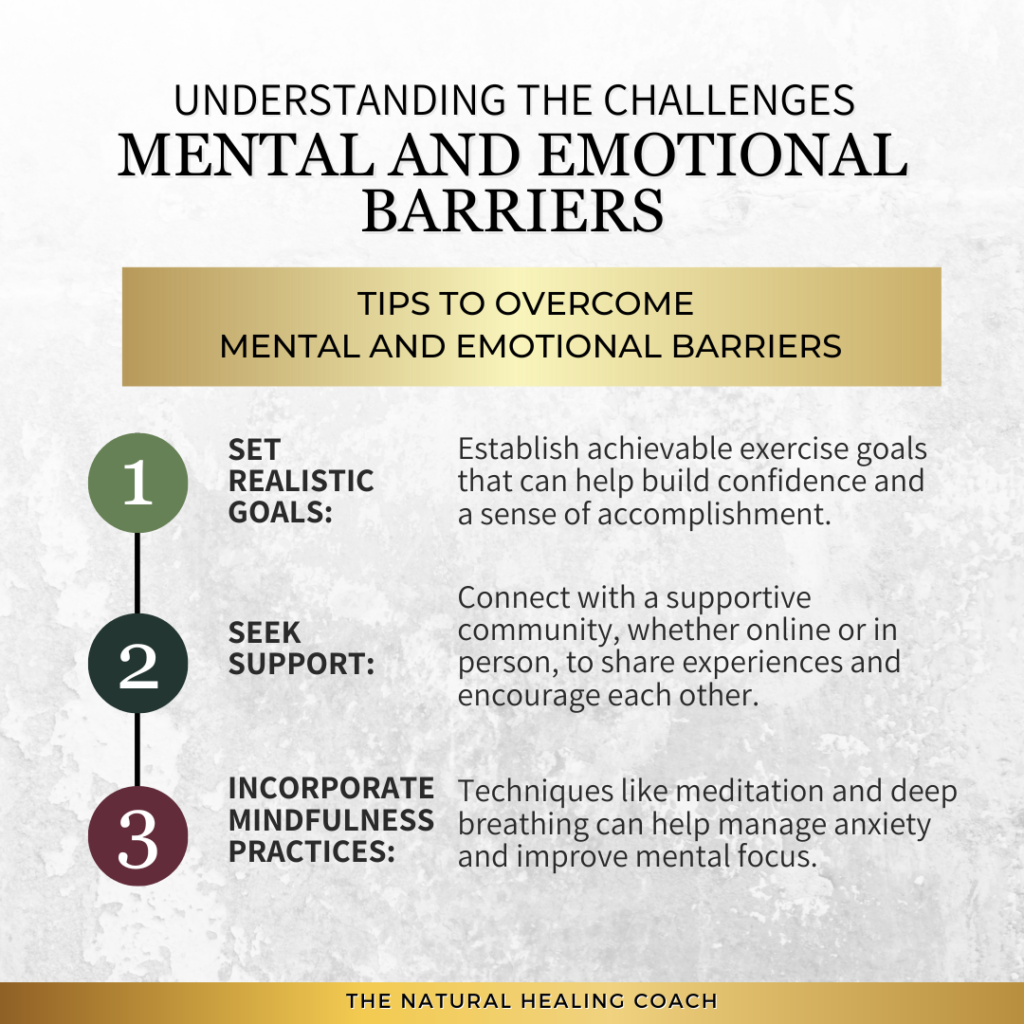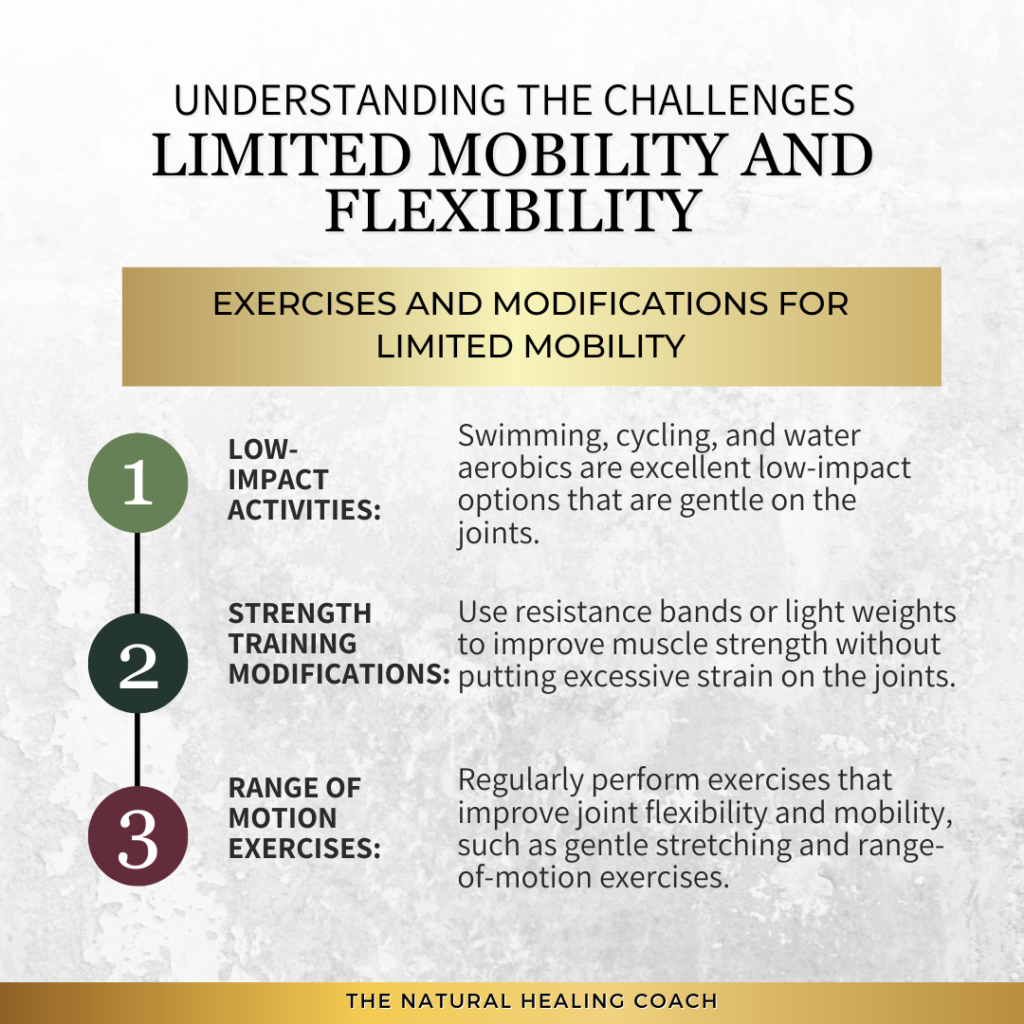Introduction
Imagine waking up each day, ready to tackle your workout routine, only to be sidelined by unexpected pain, fatigue, or a flare-up of symptoms. For many individuals with autoimmune disease, this scenario is all too familiar. Exercising, while crucial for maintaining overall health and managing symptoms, often presents a unique set of challenges. The unpredictability of autoimmune conditions can make it difficult to adhere to a regular exercise regimen, leading to frustration and a sense of defeat.
Despite these challenges, regular physical activity is known to provide numerous benefits, including improved cardiovascular health, increased strength and flexibility, better mood, and enhanced quality of life. #healcoach Share on XExercise can be a powerful tool in managing symptoms and improving overall well-being. According to the American College of Rheumatology, incorporating regular exercise into a daily routine can significantly improve physical function and reduce symptoms in individuals with autoimmune diseases.
The benefits of exercise extend beyond just the physical.
Regular activity can help boost mental health, reduce anxiety and depression, and provide a sense of accomplishment and control over one's health. #healcoach #exercise #fitness #autoimmune Share on XHowever, the journey to maintaining an active lifestyle is not always smooth. Pain, fatigue, and fluctuating symptoms can make it difficult to stay consistent, and the fear of exacerbating symptoms can be a significant barrier.
The goal of this post is to address the common challenges faced by individuals with autoimmune disease when trying to exercise and to provide practical tips for staying motivated and consistent in their fitness journey. By understanding and overcoming these challenges, you can make exercise a sustainable and beneficial part of your life, even with an autoimmune condition. Whether you’re just starting out or looking to maintain your routine, this post will help you navigate the complexities of exercising with an autoimmune disease and achieve a healthier, more active lifestyle.
4 Common Challenges to Exercising with Autoimmune Disease
Exercising with Pain and Fatigue
Pain and fatigue are two of the most common obstacles for individuals with autoimmune diseases. Chronic pain can make even the simplest exercises seem daunting, leading to avoidance and inactivity. Fatigue, which is often profound and persistent, can sap the energy needed for regular physical activity. These symptoms can create a vicious cycle where lack of exercise leads to decreased muscle strength and endurance, further exacerbating pain and fatigue.

Strategies to Address Pain and Fatigue:
- Start Slow and Gradual: Begin with low-intensity exercises and gradually increase the duration and intensity as your body adapts.
- Prioritize Rest and Recovery: Ensure adequate rest between workouts to allow your body to recover and prevent overexertion.
- Incorporate Stretching and Gentle Movements: Activities like yoga and tai chi can help manage pain and improve flexibility without overwhelming your body.
Fluctuating Symptoms
Autoimmune diseases are often characterized by periods of flare-ups, where symptoms worsen, followed by times of remission. These fluctuating symptoms can make it challenging to maintain a consistent exercise routine. During flares, pain and fatigue may be more intense, and the risk of injury or overexertion is higher.

Strategies to Manage Fluctuating Symptoms:
- Adapt Your Routine: Modify your exercise plan based on your current symptoms. On bad days, opt for gentle, low-impact activities like walking or stretching.
- Listen to Your Body: Pay attention to how your body feels and adjust your activities accordingly. It’s important to respect your limits and avoid pushing through severe pain or fatigue.
- Have a Flexible Schedule: Allow for flexibility in your exercise routine to accommodate days when symptoms are more manageable and days when rest is necessary.
Mental and Emotional Barriers
Living with an autoimmune disease can take a toll on mental health, leading to anxiety, depression, and decreased motivation. The fear of exacerbating symptoms or experiencing a flare-up can create a mental barrier to starting or continuing an exercise routine. Additionally, the frustration of dealing with unpredictable symptoms can lead to feelings of hopelessness and reduced motivation.

Tips to Overcome Mental and Emotional Barriers:
- Set Realistic Goals: Establish achievable exercise goals that can help build confidence and a sense of accomplishment.
- Seek Support: Connect with a supportive community, whether online or in person, to share experiences and encourage each other.
- Incorporate Mindfulness Practices: Techniques like meditation and deep breathing can help manage anxiety and improve mental focus.
Limited Mobility and Flexibility
Joint stiffness, reduced mobility, and muscle weakness are common issues for those with autoimmune diseases. These limitations can make it difficult to perform certain exercises and increase the risk of injury.

Exercises and Modifications for Limited Mobility:
- Low-Impact Activities: Swimming, cycling, and water aerobics are excellent low-impact options that are gentle on the joints.
- Strength Training with Modifications: Use resistance bands or light weights to improve muscle strength without putting excessive strain on the joints.
- Range of Motion Exercises: Regularly perform exercises that improve joint flexibility and mobility, such as gentle stretching and range-of-motion exercises.
By understanding and addressing these common challenges, individuals with autoimmune diseases can develop a sustainable and effective exercise routine that supports their overall health and well-being.
Tips for Staying Motivated and Consistent
Setting Clear Goals
Setting specific, achievable goals is crucial for staying motivated and consistent with your exercise routine. Clear goals provide direction and a sense of purpose, making it easier to stay on track.
Importance of Specific, Achievable Goals:
- Focus and Direction: Specific goals help you focus on what you want to achieve and how to get there.
- Motivation: Achievable goals boost motivation by providing tangible milestones to work towards.
Examples of Short-Term and Long-Term Goals:
- Short-Term Goals: Walk for 15 minutes three times a week, complete a 5-minute stretching routine daily, or try a new low-impact exercise class.
- Long-Term Goals: Build up to walking 30 minutes five times a week, improve flexibility enough to touch your toes, or participate in a local charity walk.
Tracking Progress
Keeping track of your progress helps you stay motivated by showing you how far you’ve come. It also allows you to identify patterns and make adjustments to your routine as needed.
Benefits of Keeping a Fitness Journal or Using Apps:
- Accountability: Regular tracking holds you accountable and encourages consistency.
- Insight: Tracking provides valuable insights into what works and what doesn’t, helping you fine-tune your routine.
How to Measure Progress Beyond Physical Improvements:
- Energy Levels: Note changes in your overall energy and fatigue levels.
- Mental Health: Track improvements in mood, anxiety, and stress levels.
- Symptom Management: Observe changes in symptom frequency and intensity.
Creating a Routine
Establishing a regular exercise schedule is key to making physical activity a habit. A consistent routine helps integrate exercise into your daily life, making it easier to stick with it.
Tips for Incorporating Exercise into Daily Life:
- Schedule It: Treat exercise like any other important appointment by scheduling it in your calendar.
- Combine Activities: Pair exercise with other daily activities, such as walking while on a phone call or stretching while watching TV.
- Start Small: Begin with small, manageable sessions and gradually increase the duration and intensity
Finding Enjoyable Activities
Enjoyable activities make exercise feel less like a chore and more like a fun part of your day. Finding what you love can significantly improve your motivation and consistency.
Encouraging Variety and Fun in Exercise Choices:
- Experiment: Try different activities to discover what you enjoy most.
- Mix It Up: Keep your routine interesting by incorporating a variety of exercises.
Examples of Enjoyable Low-Impact Activities:
- Walking: A simple, accessible way to stay active.
- Swimming: Provides a full-body workout with minimal impact on the joints.
- Yoga: Combines physical exercise with mental relaxation and flexibility improvement.
- Dancing: Fun and social way to get moving and improve cardiovascular health.
Building a Support Network
Having a support network can provide motivation, encouragement, and accountability. Whether it’s a workout buddy, a fitness class, or an online community, support from others can make a big difference.
Importance of Having a Workout Buddy or Joining Classes:
- Motivation: A workout buddy or group can help keep you motivated and accountable.
- Social Interaction: Exercising with others provides a social component that can make the experience more enjoyable.
Utilizing Online Communities for Support and Accountability:
- Connect: Join online groups or forums for people with similar fitness goals or health conditions.
- Share: Participate in discussions, share your progress, and seek advice and encouragement from the community.
By setting clear goals, tracking your progress, creating a routine, finding enjoyable activities, and building a support network, you can stay motivated and consistent with your exercise routine, even with an autoimmune disease.
Myths and Facts about Exercising with Autoimmune Disease
When it comes to exercising with autoimmune disease, there are many misconceptions that can hinder people from engaging in physical activity. These myths can create unnecessary fear and confusion, leading to avoidance of exercise, which isn’t beneficial for managing autoimmune conditions. It’s crucial to separate fact from fiction to become empowered with the knowledge needed to stay active safely and effectively.
Below, we debunk some of the most common myths about exercising with autoimmune disease and present the facts that can help you make informed decisions about your fitness routine. Understanding the reality of what your body can handle and how to adapt your activities will not only boost your confidence but also enhance your overall health and well-being. Let’s break down these myths and uncover the truths to help you lead a more active and fulfilling life.
Myth 1: People with autoimmune diseases should avoid exercise to prevent flare-ups
Fact: While it’s true that overexertion can lead to flare-ups, regular, moderate exercise is beneficial for individuals with autoimmune diseases. It helps improve overall health, reduce inflammation, and manage symptoms. The key is to find the right balance and listen to your body.
Myth 2: Exercise will always worsen pain and fatigue in autoimmune patients
Fact: Exercise can actually help reduce pain and fatigue in many cases. Physical activity releases endorphins, which are natural painkillers, and improves circulation and muscle strength, which can alleviate discomfort and boost energy levels.
Myth 3: Only high-intensity workouts provide health benefits
Fact: Low-impact and moderate-intensity exercises, such as walking, swimming, and yoga, can provide significant health benefits without putting undue stress on the body. These activities can improve flexibility, strength, and cardiovascular health.
Myth 4: You need to exercise every day to see benefits
Fact: While regular exercise is important, it’s not necessary to work out every day. Even exercising a few times a week can lead to health improvements. It’s crucial to include rest days to allow the body to recover, especially for individuals with autoimmune disease.
Myth 5: If you can’t do a full workout, it’s not worth doing anything
Fact: Any amount of physical activity is better than none. Short, frequent sessions of exercise can be just as beneficial as longer workouts. Even small activities like stretching or light walking can make a difference.
Myth 6: Exercise alone can cure autoimmune diseases
Fact: While exercise is an important part of managing autoimmune disease, it is not a cure. A comprehensive approach that includes medication, diet, stress management, and regular medical care is necessary to effectively manage these conditions.
Myth 7: People with autoimmune diseases should not lift weights
Fact: Strength training can be beneficial for individuals with autoimmune diseases. It helps build muscle, support joints, and improve overall physical function. It’s important to start with light weights and gradually increase resistance, always considering individual limitations and consulting a healthcare provider.
Myth 8: Exercise has no effect on mental health for autoimmune patients
Fact: Exercise has a positive impact on mental health, reducing symptoms of anxiety and depression, which are common in individuals with autoimmune diseases. Physical activity stimulates the release of endorphins and other neurotransmitters that enhance mood and reduce stress.
Myth 9: People with autoimmune diseases should follow the same exercise routines as healthy individuals
Fact: Exercise routines for individuals with autoimmune diseases should be customized to accommodate their unique needs and limitations. What works for a healthy person may not be suitable for someone with an autoimmune condition. Personalized plans ensure safety and effectiveness.
Myth 10: Exercising will not make a significant difference in managing autoimmune symptoms.
Fact: Consistent exercise can play a crucial role in managing autoimmune symptoms. It helps improve physical function, reduce inflammation, enhance mood, and increase energy levels. Many individuals with autoimmune diseases report significant improvements in their quality of life through regular physical activity.
Understanding the truths about exercising with autoimmune disease can empower you to take control of your health and well-being. By debunking common myths, we hope to encourage you to incorporate physical activity into your routine in a way that is safe and beneficial. Remember, exercise is a powerful tool in managing symptoms and improving quality of life, but it’s essential to listen to your body, personalize your fitness plan, and seek guidance from healthcare professionals. Embrace the journey with patience and persistence, knowing that every step you take towards a more active lifestyle is a step towards better health.
Final Thoughts
Navigating the world of exercise with an autoimmune disease is undoubtedly challenging, but it’s also a journey filled with opportunities for growth, resilience, and empowerment. The road may be unpredictable, with flare-ups and setbacks, but each step you take towards staying active is a victory in its own right. It’s important to remember that consistency, not perfection, is the key to reaping the benefits of physical activity. By setting realistic goals, listening to your body, and being adaptable, you can create a sustainable exercise routine that not only strengthens your body but also uplifts your spirit.

Incorporating exercise into your life is about more than just physical health—it’s a way to regain control, boost mental well-being, and foster a deeper connection with yourself. As you continue on this path, let go of any preconceived notions about what your fitness journey should look like. Embrace the unique rhythm of your body, and celebrate the small victories along the way.
Most importantly, don’t be afraid to seek support, whether from healthcare professionals, a fitness community, or loved ones. You are not alone in this journey, and together, we can overcome the challenges and embrace a healthier, more active lifestyle. Every movement, no matter how small, is a testament to your strength and determination. Keep moving forward, with patience and persistence, knowing that each step brings you closer to a brighter, more vibrant future.
Call to Action
If you found this information helpful and want to learn more about managing autoimmune conditions and staying active, we invite you to engage with our community. Join the conversation, share your experiences, and connect with others who are on the same journey towards better health.
Stay Informed and Connected
- Engage on Social Media: Follow us on your favorite social media platforms for daily tips, inspiration, and community support. We regularly share practical advice, uplifting stories, and the latest research on exercising with autoimmune conditions. Join the conversation and be part of a supportive community.
Subscribe to Our Newsletter
- Exclusive Insights: Get in-depth articles and updates on the latest research in autoimmune health directly to your inbox.
- Health Tips: Receive practical tips and strategies for managing your condition and improving your overall well-being.
- Stay Updated: Be the first to know about new blog posts, upcoming events, and other valuable resources.
Join the Discussion
- Leave a Comment: We’d love to hear your thoughts and experiences. Share your insights in the comments below and connect with others who are on the same journey. Your comments help build a supportive community where everyone can learn and grow together.
Together, we can take proactive steps towards better health and well-being, even with autoimmune disease.
If you are looking for more tips and support, join me over on my group page, The Village – A Natural HEALing Community, to get tons of information and tips to help you take your HEALTHY EATING and ACTIVE LIVING to the next level.
REFERENCES:
- Harvard Health Publishing. “Get Moving to Manage Arthritis.”
- Arthritis Foundation. “High-Intensity Exercise and Rheumatoid Arthritis.”
- National Institute on Aging. “Exercise and Physical Activity: Your Everyday Guide from the National Institute on Aging.”
- Mayo Clinic. “Arthritis: Keep your joints healthy with exercise.”
- National Institutes of Health (NIH) Intramural Research Program. “Exercise Energizes Patients with Autoimmune Disease.”
- Sports Medicine Weekly. “How Exercise Can Help You Manage Autoimmune Disorders.”
- ScienceDirect. “Effects of Exercise on Autoimmune Diseases: A Review of Evidence.”
- PubMed. “Exercise as a Therapeutic Intervention for Autoimmune Diseases.”
MORE RELATED POSTS:







+leave a comment . . .